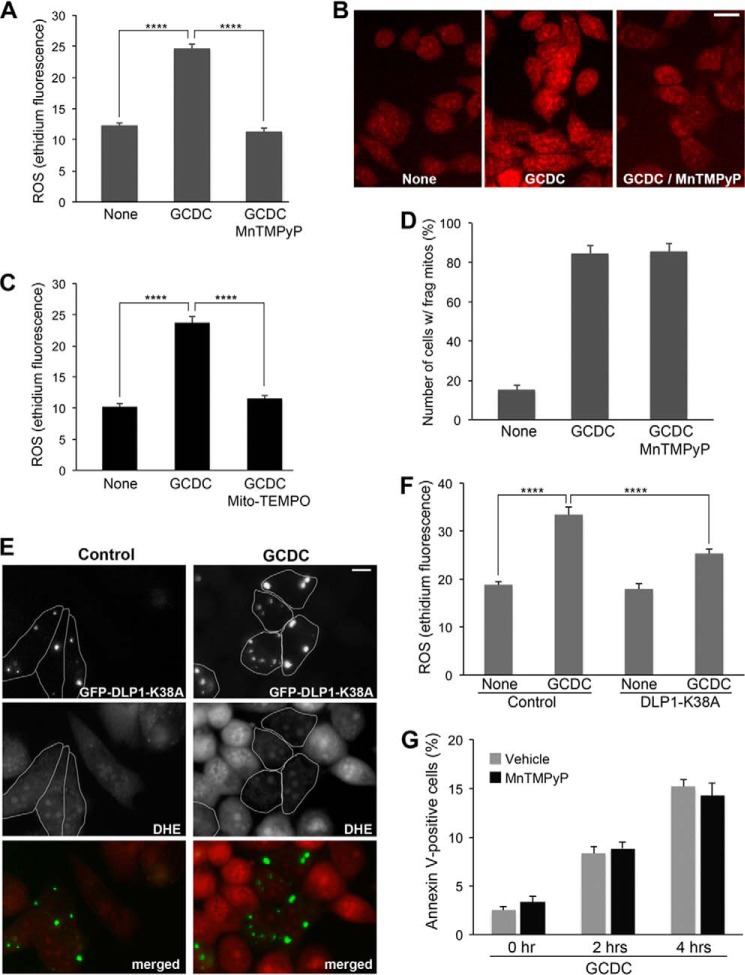FIGURE 5.
Inhibition of mitochondrial fission prevents GCDC-induced ROS increase. A–C, GCDC treatment increases ROS production from mitochondria. GCDC treatment (100 μm, 15 min) increases ethidium fluorescence in McNtcp.24 cells (B, middle panel), and MnTMPyP normalized the ROS level (B, right panel). Quantification of ethidium fluorescence (A). Mito-TEMPO also normalized GCDC-induced ROS increase, indicating mitochondrial origin of ROS (C). ****, p < 0.0001. D, inhibition of ROS increase by MnTMPyP does not prevent GCDC-induced mitochondrial fragmentation. ∼300 cells were counted in each treatment; the experiment was repeated three times. Error bars represent S.E. E and F, inhibition of mitochondrial fission prevents GCDC-induced ROS increase. In control McNtcp.24 cells, ROS levels were low in both untransfected and GFP-DLP1-K38A-expressing cells (outlined). In GCDC-treated cells (100 μm, 15 min), ROS in DLP1-K38A cells (outlined) remained low, whereas untransfected cells showed significantly increased ROS levels. Quantification of ethidium fluorescence (F). n = 40, ****, p < 0.0001. G, preventing ROS increase by MnTMPyP does not block cell death in GCDC treatment.

